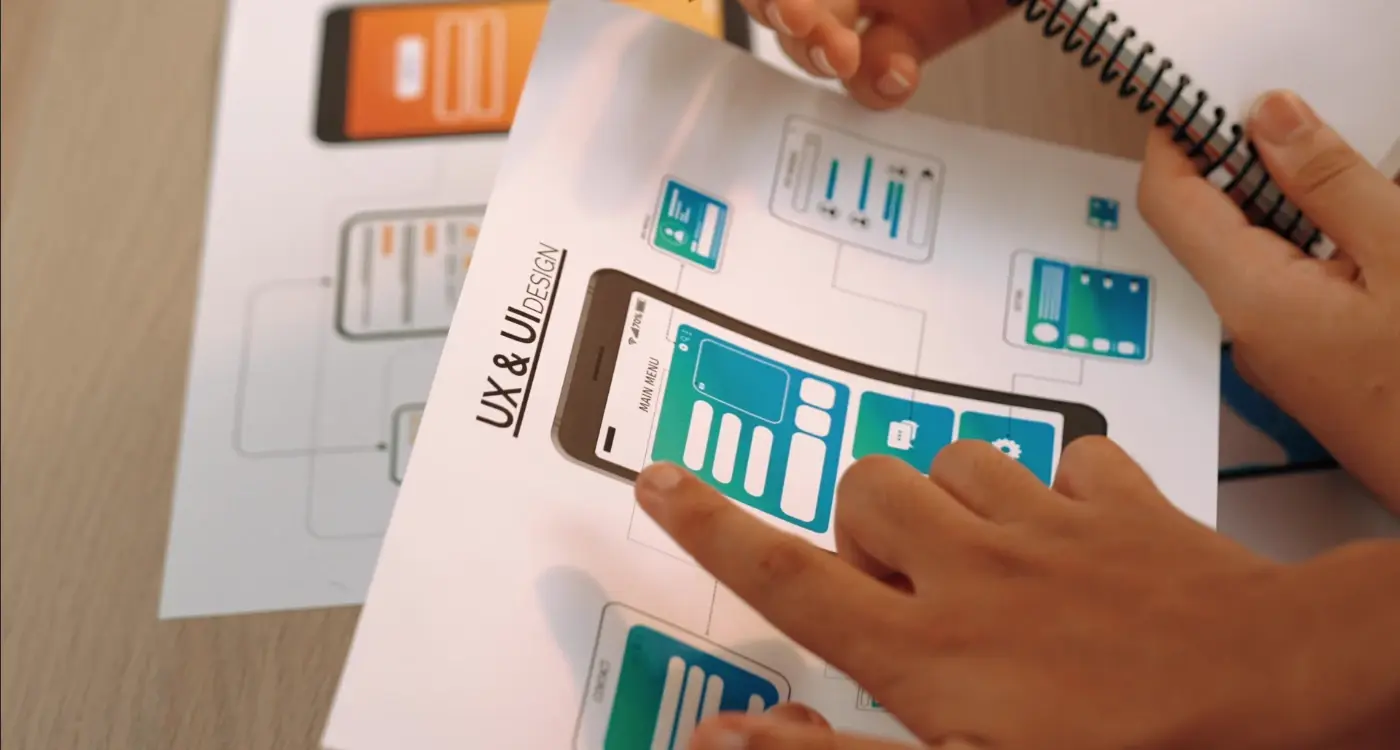What Makes User Research Findings Actually Useful For Apps?
How many times have you commissioned user research for your app, only to end up with a hefty report that somehow doesn't tell you what to actually do next? I see this happen all the time—teams spend weeks gathering feedback, running surveys, and conducting interviews, then find themselves staring at data that feels more like academic theory than practical guidance for making their app better.
After years of working with companies who've been burned by research that didn't translate into real improvements, I've noticed a pattern. The problem isn't usually with the research methods themselves; it's with how we approach the whole process. Most research efforts focus on collecting information rather than generating actionable insights that directly inform app development decisions.
The difference between useful and useless research often comes down to asking the right questions from the start. Are you trying to prove something you already believe, or are you genuinely trying to understand what your users need? Are you collecting data for the sake of having data, or are you looking for specific insights that will help you prioritise your next development sprint?
The best user research doesn't just tell you what users want—it shows you exactly what to build next and why it matters to your business
In my experience, the most valuable research projects are the ones that start with clear goals about what decisions need to be made. When you know what you're trying to decide—whether that's which features to prioritise, how to improve your onboarding flow, or why users are abandoning your app—you can design research that actually helps you make those decisions. That's when research becomes truly useful for app improvement, rather than just an expensive box-ticking exercise.
Why Most User Research Misses the Mark
After years of working with clients on user research, I've noticed something quite frustrating. Most of the research that gets done is basically useless—and I mean that in the nicest way possible! It's not that people aren't trying; it's that they're asking the wrong questions and measuring the wrong things.
The biggest mistake I see? People fall in love with what users say instead of watching what they actually do. Someone will tell you they'd definitely use a feature, then never touch it once its built. It's maddening, but it happens all the time. Users aren't lying—they genuinely think they want something until reality kicks in.
Here's the thing that really gets me: most research focuses on preferences instead of problems. You'll get feedback like "I'd prefer the button to be blue" or "I want more customisation options." But that's not solving the core issue of why people aren't using your app in the first place.
The Real Issues With Traditional Research
- Asking hypothetical questions about future behaviour
- Focusing on feature requests rather than underlying needs
- Using surveys when observation would be more useful
- Testing in artificial environments that don't match real usage
- Interviewing the wrong people who aren't your actual users
The research that actually helps—the stuff that changes how you build your app—comes from understanding the context of when and why people struggle. Not what they think they want, but what stops them from getting things done. That's where the real insights live, buried underneath all the surface-level feedback that sounds helpful but leads nowhere useful.
Getting to the Real Problems Users Face
Here's the thing about user problems—they're rarely what people tell you they are. I mean, users will say they want faster loading times or better colours, but what they actually need might be completely different. The real skill in user research isn't just collecting feedback; its digging deeper to find the problems hiding beneath what people say.
When someone tells you "the app is confusing", that's not really the problem. That's a symptom. The actual problem might be that they can't find the search function, or the navigation doesn't match how they think about the task, or maybe they're trying to use your shopping app like a social media platform because that's what they're used to.
I've found the best way to uncover real problems is to watch what users do, not just listen to what they say. When you observe someone struggling with a simple task for five minutes, then claiming "it was fine" in the interview—that tells you everything you need to know about the gap between perception and reality.
Ask "show me how you normally do this" instead of "what do you think of this feature". Watching actual behaviour reveals problems that users can't or won't articulate.
Questions That Reveal Hidden Problems
- What were you trying to achieve when this happened?
- Walk me through your typical day using apps like this
- What would you do if this button wasn't here?
- How does this compare to what you expected?
- What's the most annoying part of this process?
The magic happens when you start connecting these individual struggles to broader patterns. That's when you move from collecting random complaints to identifying actionable research that can actually drive app improvement decisions.
Making Sense of What Users Actually Say
Right, so you've collected all this user feedback and now you're staring at a mountain of comments, survey responses, and interview notes. The question is—what do you actually do with it all? This is where most people get stuck, and honestly, I don't blame them. Users don't always say what they mean, and they definitely don't mean what they say half the time.
Here's the thing about user feedback: it's rarely about what they're actually telling you on the surface. When someone says "I want more features," what they usually mean is "I'm struggling to do something with your current features." When they say "make it faster," they might actually mean "I'm getting lost in the navigation." You need to dig deeper than their initial complaints.
Reading Between the Lines
I've learned to look for patterns rather than individual complaints. If five people mention the same issue in completely different ways, that's your real signal. One person might say "it's confusing," another says "too many steps," and a third mentions "I gave up halfway through"—but they're all talking about the same usability problem.
The best approach I've found is to categorise feedback into three buckets:
- What they say they want (their stated request)
- What problem they're actually facing (the underlying issue)
- What behaviour this reveals (the real insight)
For example, when users ask for "better search functionality," the real problem might be that your information architecture is a mess. The behaviour this reveals? People are using search as navigation because they can't find things naturally. That's a much bigger fix than just improving search—but it's the right fix.
Look for emotional language too. When people say something is "frustrating" or "annoying," pay attention. These aren't just complaints; they're telling you exactly where your app is creating friction in their day.
Turning Data Into Clear Next Steps
Right, so you've got all this research data sitting in front of you—user feedback, analytics, survey responses, maybe some usability testing notes. Now what? This is where I see most teams get stuck, honestly. They've done the hard work of gathering insights but then struggle to turn those findings into actual improvements their development team can work with.
The key is translating user problems into specific design and development tasks. When users say "the app is confusing," that's not actionable research yet—you need to dig deeper. What specifically confused them? Was it the navigation? The onboarding flow? The way buttons are labelled? Once you pinpoint the exact issue, you can create targeted solutions.
Creating a Priority Framework
I always tell my team to score each finding based on three things: how many users it affects, how severely it impacts their experience, and how feasible it is to fix. A critical bug that affects 80% of users but takes two weeks to resolve? That's top priority. A nice-to-have feature that only 5% mentioned? Bottom of the list.
The best research insights are the ones that make your developer immediately understand what needs to change and why it matters to users
Document your findings in a way that connects user pain points directly to proposed solutions. Instead of "users want better search," write "users can't find products because autocomplete doesn't work on mobile keyboards—implement predictive search with tap suggestions." That's actionable research that your team can actually build with. The goal isn't just to understand users better; it's to create apps that work better for them.
Testing Your Research Findings
Right, so you've got your research findings—but here's the thing that catches out loads of people. Just because users said something in interviews or surveys doesn't mean they'll actually behave that way when they're using your app. I mean, we all say we're going to eat healthier and exercise more, but then Friday night rolls around and we're ordering pizza whilst watching Netflix!
The gap between what people say and what they do is massive in mobile apps. That's why you need to test your findings before you build anything expensive. And honestly? This is where things get interesting because you start seeing the real patterns emerge.
Start Small and Smart
You don't need a fully built app to test your research findings. Actually, that would be mad—and expensive. Instead, you can test core assumptions using simple prototypes, landing pages, or even just mockup screens. I've seen clients validate entire app concepts using nothing more than a few wireframe screens and some basic user testing sessions.
One approach that works really well is creating what I call "assumption tests." List out the main things your research told you, then design small experiments to check if they're actually true. For example, if users said they want a particular feature, create a prototype of just that feature and see how they interact with it.
Types of Tests That Actually Work
- Prototype testing with clickable mockups
- A/B testing different approaches to the same problem
- Landing page tests to measure genuine interest
- Task-based user testing sessions
- Beta testing with a small group of real users
The key is measuring actual behaviour, not just opinions. Watch what people do, time how long tasks take, and look at where they get stuck. Those insights will tell you if your research findings actually translate into a usable app that people will want to keep using.
Building Research Into Your App Strategy
Here's where things get properly interesting—turning all that research into actual strategy decisions. I've worked with teams who collect brilliant user insights but then struggle to weave them into their product roadmap. It's a bit mad really, because without this connection, all that research effort goes to waste.
The key is making research findings part of every major decision you make about your app. When you're planning new features, updating the user interface, or even changing your onboarding flow, your research should be sitting right there on the table. I mean, why would you make big decisions without knowing what your users actually think?
Creating Research-Driven Roadmaps
Your product roadmap shouldn't just be a list of features you think would be cool. Each item should connect back to specific research findings that justify its priority. When I'm working with clients, we create a simple system that links every roadmap item to the research insight that supports it.
Create a "research rationale" document for each major feature or change. Include the specific user feedback, data points, or behavioral insights that support the decision. This keeps everyone aligned and makes it easier to explain choices to stakeholders.
But here's the thing—research isn't just for big strategic decisions. It should influence the small stuff too. How you word your error messages, where you place buttons, what notifications you send; all of these micro-decisions can benefit from user insights. The apps that really succeed are the ones that let research guide both the forest and the trees, if you know what I mean.
Making Research Actionable
The difference between good research and great research is how actionable it becomes. Here's what makes research findings actually useful:
- They point to specific problems you can solve
- They suggest clear next steps or solutions
- They help you prioritise what to work on first
- They give you metrics to measure success
- They connect to your business goals
Remember, research without action is just expensive data collection. The real value comes when you use those insights to make your app genuinely better for the people who use it every day.
Common Research Mistakes That Waste Time
After years of watching app projects stumble because of dodgy research, I can spot the common mistakes from a mile away. And honestly? Most of them come down to asking the wrong questions or asking the right questions in completely the wrong way.
The biggest time-waster I see is what I call "vanity research"—asking users what they think about your app idea instead of understanding their actual problems. I mean, of course people will say your concept sounds great when you're standing right there waiting for their answer! But that tells you absolutely nothing about whether they'll actually use it when push comes to shove.
The Most Time-Consuming Research Traps
Here's what I see teams doing that burns through budgets and delays launches:
- Running surveys with leading questions that confirm what you already believe
- Testing with friends, family, or colleagues instead of real target users
- Focusing on features people say they want rather than problems they actually have
- Doing research too late in the development process when changes become expensive
- Collecting feedback without any plan for how you'll act on it
- Asking hypothetical questions about future behaviour instead of understanding current habits
Another massive mistake? Treating research like a one-time event rather than an ongoing conversation with your users. I've seen teams spend months on upfront research, then build for another six months without talking to users again. By the time they launch, half their assumptions have gone stale.
The fix isn't doing more research—its doing smarter research. Start with small, quick studies that answer specific questions. Test early and often. And always remember that what people say they'll do and what they actually do are often completely different things. Focus on observing behaviour, not just collecting opinions, and you'll save yourself months of wasted effort.
Conclusion
Look, after years of watching apps succeed and fail based on how they use research, I can tell you this—the difference between useful and useless research isn't complicated. It comes down to whether you're willing to dig past the surface and actually act on what you find.
Most teams collect feedback like they're ticking a box. They run surveys, hold focus groups, and call it job done. But that's not research analysis; that's just data collection. The real work starts when you ask why users behave the way they do, not just what they say they want.
I've seen apps completely transform their trajectory by spotting patterns in user behaviour that seemed obvious once pointed out. A fintech app we worked with was struggling with low engagement until we realised users weren't avoiding the main features because they were confusing—they were avoiding them because they felt overwhelmed by choice. The solution wasn't better tutorials; it was showing less stuff at once.
That's actionable research. When your findings lead to specific changes that measurably improve your app, you're doing it right. When they sit in a presentation deck gathering digital dust, you've missed the point entirely.
The apps that last—the ones people actually keep using—are built by teams who treat user insights as their compass, not their destination. They test their assumptions constantly, watch how people actually behave (not just what they say), and aren't afraid to change course when the data points in a different direction.
Your users are already telling you how to make your app better. The question is: are you listening closely enough to hear them?
Share this
Subscribe To Our Learning Centre
You May Also Like
These Related Guides

How Do You Turn User Feedback into Better App Features?

What Are the Different Types of User Testing for Mobile Apps?



